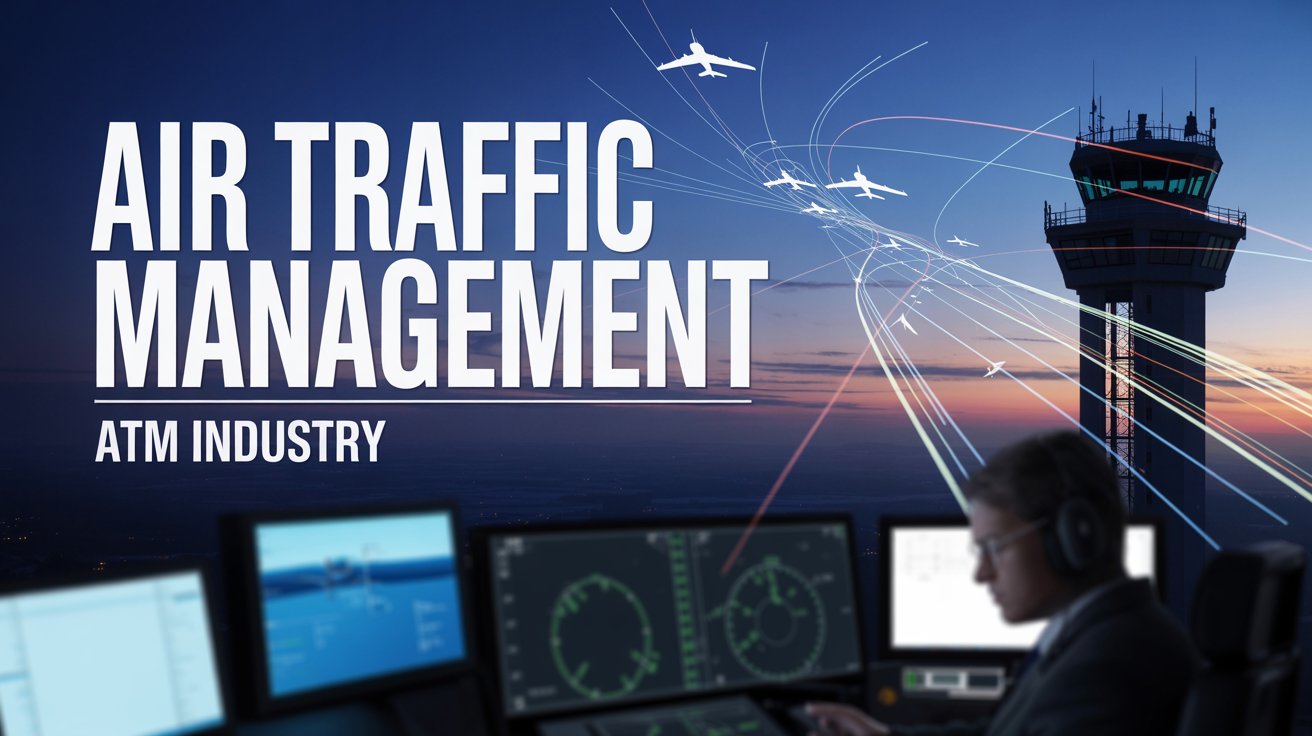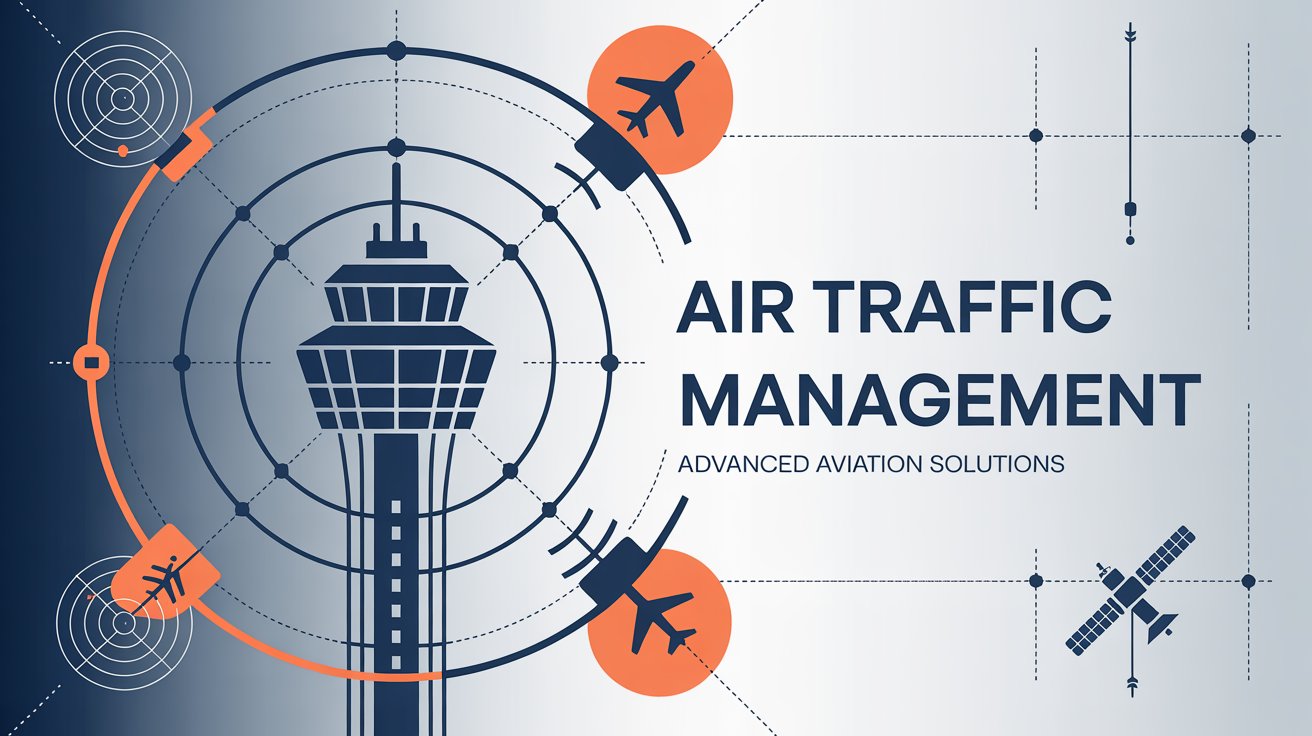The global aviation landscape is evolving faster than at any time in recent history. Rising passenger demand, growth in cargo operations, the emergence of urban air mobility, and more complex airspace users all place unprecedented pressure on existing air traffic management systems. Next-generation Air Traffic Management, or Next-Gen ATM, is the industry response. It moves beyond incremental upgrades to become a holistic, data-driven ecosystem that prioritizes safety, efficiency, capacity, and sustainability. This article explains what Next-Gen ATM is, why it matters, the technologies driving it, and how stakeholders can prepare for the smarter, safer skies ahead.

What is Next-Gen ATM?
Next-Gen ATM is a modernized approach to managing air traffic and airspace that emphasizes digital integration, automation, and collaborative decision making. Rather than treating communication, navigation, surveillance, and automation as separate silos, Next-Gen ATM connects these functions into an interoperable framework that shares real-time data among aircraft, air traffic service providers, airports, and other aviation stakeholders. The goal is to enable predictable, resilient, and optimized operations that support increasing traffic volumes without compromising safety.
Download PDF Brochure @ https://www.marketsandmarkets.com/pdfdownloadNew.asp?id=160955838
Why Next-Gen ATM Matters
Today’s ATM systems were designed for a smaller, less connected era. They rely heavily on voice communications, radar feeds, and manual coordination. Those methods are reaching practical limits as airspace density and mission complexity increase. Next-Gen ATM becomes crucial for several reasons:
Safety: Enhanced surveillance and automated conflict detection reduce the risk of human error, giving controllers superior situational awareness and more time to respond.
Capacity: Smarter flow management and precise navigation increase the number of operations airspace can safely handle, reducing delays and unlocking airport throughput.
Predictability: Data-driven trajectory management enables more reliable arrival and departure times, improving airline operations and passenger experience.
Sustainability: Optimized trajectories and reduced holding patterns lower fuel burn and CO2 emissions, supporting aviation decarbonization goals.
Resilience: Distributed systems and cloud-enabled services improve the ability to recover from outages and adapt to changing traffic patterns.

Core Technologies Powering Next-Gen ATM
Several technological advances converge to make Next-Gen ATM feasible and effective.
Data Link Communications and CPDLC: Digital controller-pilot data link communications reduce voice congestion and enable precise, unambiguous exchanges. This capability supports more automated clearances and trajectory updates.
Satellite-Based Navigation and Surveillance: GNSS augmentation systems and space-based ADS-B extend surveillance beyond radar coverage, allowing continuous tracking over oceans and remote regions. This improvement increases route efficiency and opens new airspace corridors.
Trajectory-Based Operations (TBO): TBO creates shared, time-based trajectories that all stakeholders accept and manage collaboratively. Instead of managing individual clearances reactively, TBO pre-plans and coordinates optimal paths across the network.
Artificial Intelligence and Predictive Analytics: AI models forecast traffic demand, detect conflicts before they emerge, and recommend mitigations. Predictive analytics enable capacity management to be proactive, lowering controller workload and smoothing traffic peaks.
Cloud Infrastructure and Edge Computing: Cloud services provide scalable processing and storage for large aviation datasets, while edge computing reduces latency for time-critical functions. Together they enable distributed, resilient ATM services.
Remote and Virtual Towers: High-definition video feeds, sensors, and integrated data allow controllers to operate tower services remotely. This model increases flexibility and can provide continuous coverage for smaller airports.
System-Wide Information Management (SWIM): SWIM establishes standardized, secure information exchange across the air transport system. This layer is foundational for interoperability and real-time collaboration.
Human Factors and Automation Integration
Technology alone will not transform ATM. Human-centered design is crucial. Controllers and pilots must trust automated tools, understand how recommendations are generated, and remain able to intervene when necessary. User interfaces should present concise, prioritized information and support rapid decision making. Training programs need to evolve to include data literacy, automation supervision, and multi-domain coordination. A gradual, transparent introduction of automation, with operational trials and strong safety cases, will support acceptance and safe integration.
Regional Harmonization and Global Interoperability
Next-Gen ATM yields the greatest benefits when systems interoperate regionally and globally. Harmonization efforts align standards, procedures, and data formats so that aircraft and operators moving across regions experience seamless services. Collaboration initiatives, whether formal programs or bilateral agreements, help synchronize modernization timelines and ensure interoperability between legacy and new systems.
Industry Partnerships and Commercial Opportunities
The shift to Next-Gen ATM is creating opportunities across the aviation ecosystem. Technology providers can develop modular software suites for trajectory management, analytics platforms for demand forecasting, and secure SWIM-compliant interfaces. Airports and ANSPs can adopt collaborative decision-making platforms that improve resource utilization. Airlines benefit through fuel savings and schedule reliability. Investors and governments have roles to play in funding modernization and enabling regulatory frameworks that allow innovation without compromising safety.
Implementation Roadmap: Practical Steps Forward
Establish governance and strategy: Public and private stakeholders should define clear modernization objectives aligned to safety, capacity, and sustainability goals.
Prioritize modular upgrades: Focus on solutions that deliver measurable improvements quickly, such as data link communications and improved surveillance, while designing for future integration.
Invest in data infrastructure: Build robust data management and security capabilities to support SWIM, analytics, and system scaling.
Conduct operational trials: Validate technologies through phased trials that include controllers, pilots, and airport operators to gather real-world performance and human factors insights.
Upskill the workforce: Launch training programs that blend technical skills with decision-making under automation and new collaborative procedures.
Foster partnerships: Encourage public-private partnerships that spread risk, co-fund innovation, and accelerate deployment timelines.
Ask for Sample Report @
https://www.marketsandmarkets.com/requestsampleNew.asp?id=160955838
Next-Gen Air Traffic Management is not a single product or upgrade. It is a strategic transformation of how aviation movements are planned, coordinated, and executed. By leveraging digital communications, satellite surveillance, AI, and collaborative operations, the aviation industry can build a system that is smarter, safer, and more sustainable. Achieving that future requires technical innovation, human-centered design, regulatory alignment, and cooperative investment. For airlines, airports, air navigation service providers, and technology companies, Next-Gen ATM presents an opportunity to lead aviation into a more efficient and resilient era. The sky is a shared resource and the push toward a smarter airspace ensures that this resource can be used safely, responsibly, and with far greater value for all stakeholders.
